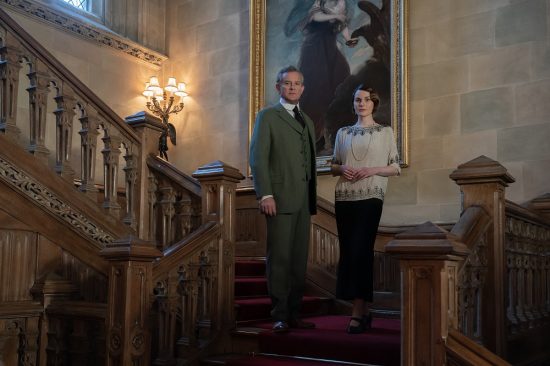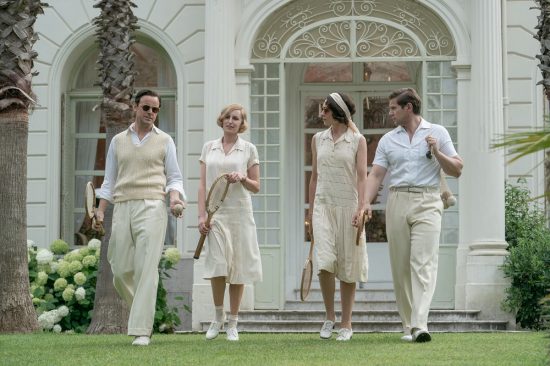Review – Downton Abbey: A New Era – Come for the Dame, Stay for the Haddock.

Hugh Bonneville stars as Robert Grantham and Michelle Dockery as Lady Mary in DOWNTON ABBEY: A New Era, a Focus Features release.
Credit: Ben Blackall / © 2021 Focus Features, LLC
The Venn diagram overlap containing viewers of Ari Aster’s Midsommar and Downton Abbey: A New Era can’t be large. Although radically different in tone, the films share many themes. Both centre on a mostly uber-white group of privileged westerners obsessed with ceremony, ritual and lineage. They both use their runtimes to tap into raw human emotion. And the heft of a Swedish mallet is almost equal to the sharpness of the English matriarchal tongue.
Be rest assured, A New Era is not a horror movie, although its semi-coloned existence mirroring many horror sequels, is concerning. Following the success of the beloved TV series and previous film, creator Julian Fellowes continues to plumb the cyclical nature of upper class life: birth, party, wedding, party, stressful life event, party, death of hero, wake. It’s easy to dismiss these stories as exhausted. But Fellowes and director Simon Curtis have some new tricks up their tuxedo sleeves. A New Era, set in the 1930’s, reckons with the demise of the service class system (it ended?) and of the aristocracy’s stranglehold on British life (ditto). The result is an unexpectedly poignant film bathed in rigid formality. It’s familiarity acts as a balm for our current chaotic world.

(l-r.) Harry Hadden-Paton stars as Bertie Pelham, Laura Carmichael as Lady Edith, Tuppence Middleton as Lucy Smith and Allen Leech as Tom Branson in DOWNTON ABBEY: A New Era, a Focus Features release.
Credit: Ben Blackall / © 2021 Focus Features, LLC
The ailing Dowager Countess (Maggie Smith) conveniently remembers that she was once gifted a French Chateau. She’d like to pass it on to her great-grandchild, Sybbie. The Chateau’s current residents, including the gift-giver’s widow, dispute the gift. So, a coterie of family members and nosey parkers led by Lord and Lady Grantham (Hugh Bonneville and Elizabeth McGovern) head off to France to smooth matters over. Meanwhile, Lady Mary (Michelle Dockery) must find the funds to fix the Abbey’s leaky roof. She accepts an offer from silent film director Jack Barber (Hugh Dancy) to set his latest masterpiece at Downton. The film’s crew and gorgeous stars (Laura Haddock and Dominic West) take over the abbey just as talking films make their debut. Barber realises he needs to move with the times, but his actors aren’t quite ready to use their voices. Throughout, the bedridden Dowager spits her zingers as the film explores old and new ways of living. Finally, there’s a nice culmination to a long-running love story below stairs.
A New Era is a brisk, historical piece with spectacular production design and a keen eye on the dawn of the talkies. Fellowes’ fondness for his characters in the writing allows many to shine, including in witty repartee between real life spouses Imelda Staunton and Jim Carter. Curtis does well to reserve space for new additions. Laura Haddock in particular is an absolute delight whose hilarious performance almost steals the show. But nobody puts Dame Maggie Smith in a corner, here to outshine all coastal grandmothers. Be prepared to cry as much as laugh at the 87 year old’s wonderful work. Unfortunately, some things at Downton remain the same. Weirdly similar to Midsommar, characters inexplicably love being in the servitude of others. Of course, A New Era is not a documentary, so there’s much glossing over class, race and sexism. The film does, however, heavy-handedly attempt to further LGBT rights.
It’s a fun outing, but unlike Midsommar, Downton Abbey: A New Era isn’t here to promote fierce originality. Yet, in the period drama genre there are few films better made than this.









